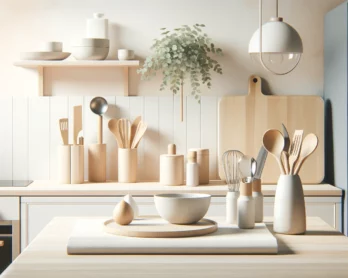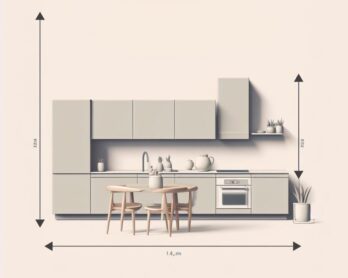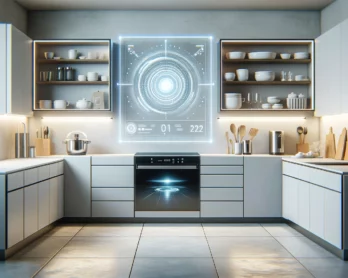- The Advantages of Custom Kitchen Hoods
- Types of Custom Range Hoods
- Designing Your Custom Range Hood
- Custom Range Hood Costs and Considerations
- Custom Range Hood Installation
- Maintenance and Care of Custom Range Hoods
- Custom Range Hood Accessories and Upgrades
- How to Choose the Right CFM for Your Custom Range Hood
- Ducted vs. Ductless Custom Range Hoods
- Summary
- Frequently Asked Questions
Is your kitchen craving a dash of elegance and a breath of fresh air? A custom range hood might be the missing piece in your culinary haven. Custom hoods kitchen enhance ventilation, boost aesthetics, and could even raise your home’s value. Let’s delve into the world of custom range hoods and discover how one could transform your kitchen.
Short summary
- Custom kitchen hoods offer improved ventilation, air purification, and a stylish addition to the home.
- Various materials are available for custom range hoods including wood, copper, and stainless steel.
- When selecting a custom range hood consider style, finish/texture size/fanliner as well as cost of installation & maintenance requirements.
The Advantages of Custom Kitchen Hoods
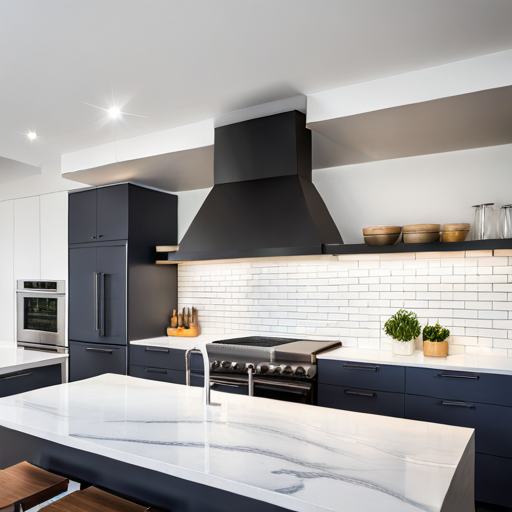
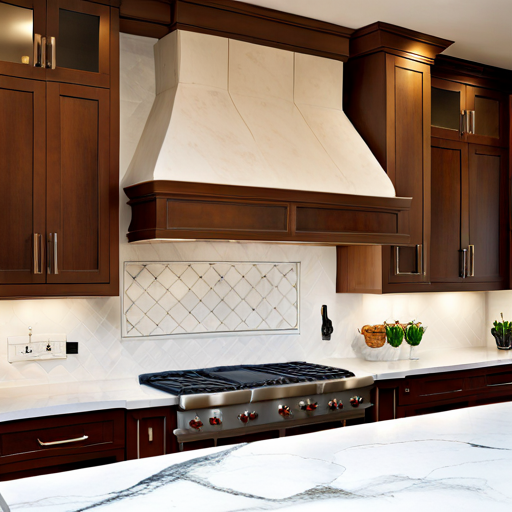
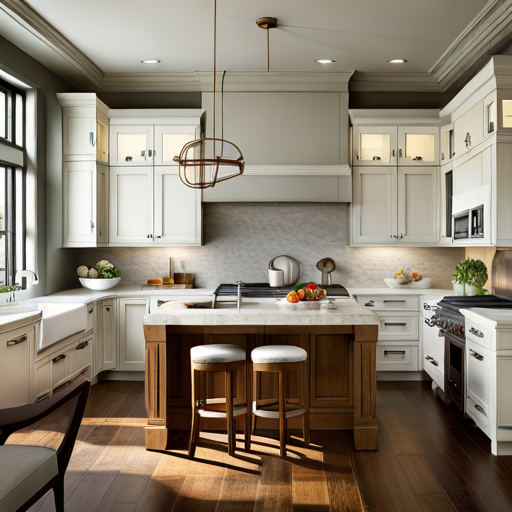
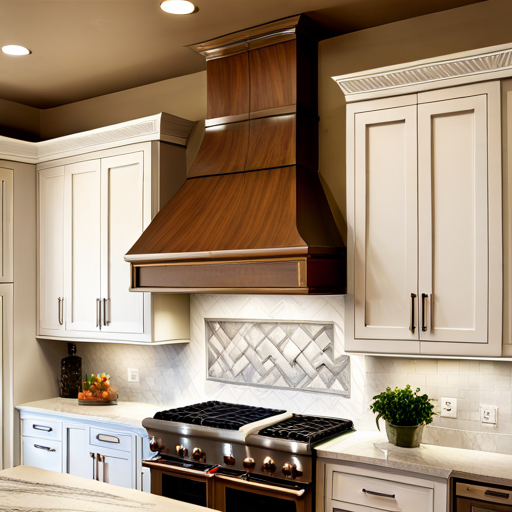
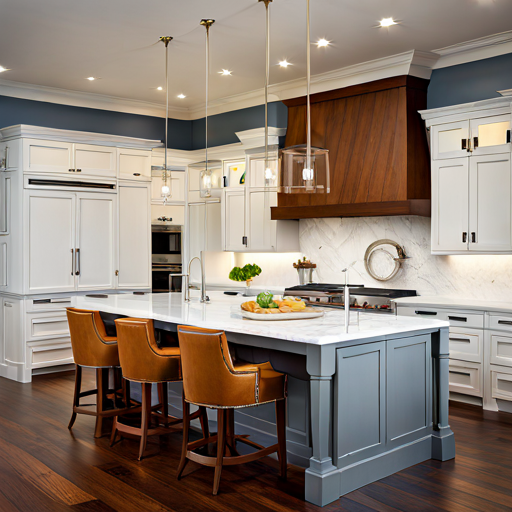
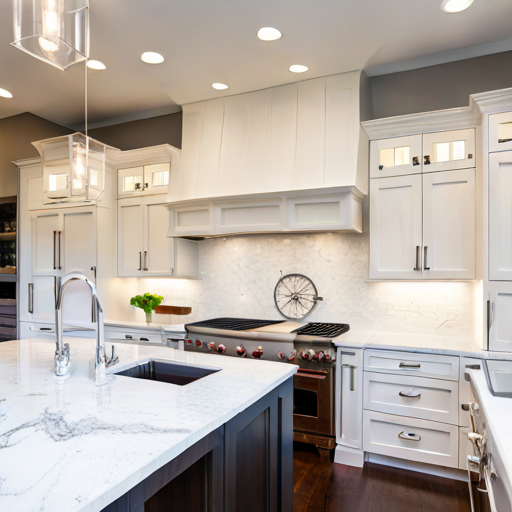
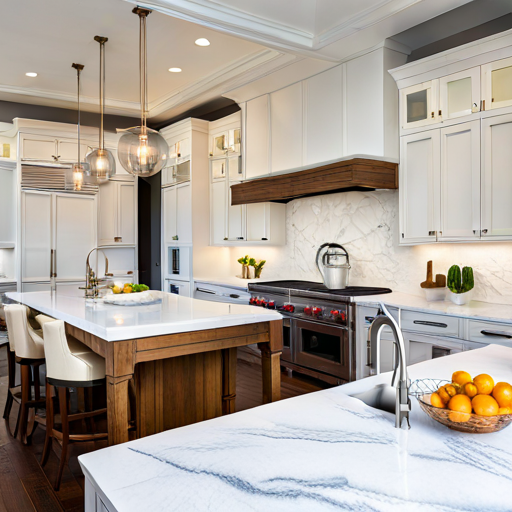
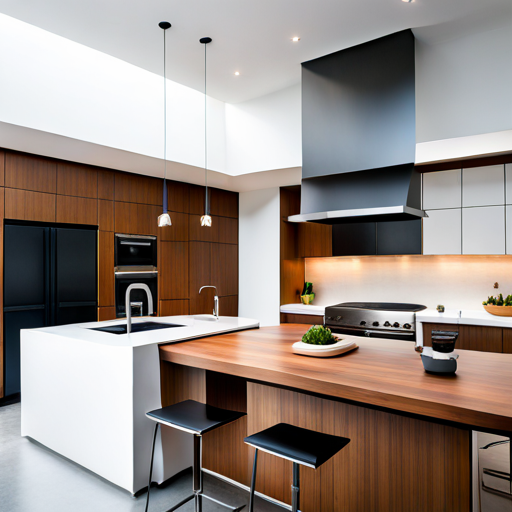
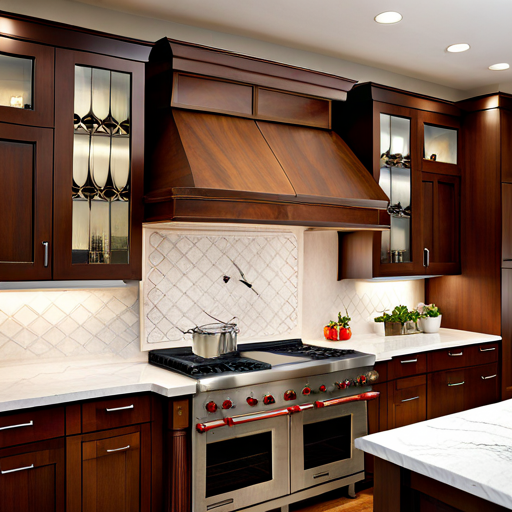

Imagine cooking an aromatic curry or grilling a juicy steak without the lingering scent haunting your home for hours or days. A well-ventilated kitchen is a joy to cook and dine in, and a custom range hood delivers just that. But that’s not all! By promoting air circulation and purifying the air, a range hood contributes to a healthier living space by reducing airborne grease, smoke, and carbon monoxide.
Custom range hoods are not just functional appliances; they are a style statement. Whether you prefer a bold metal hood or a hood that blends seamlessly with your cabinetry, there is a design out there that will perfectly match your kitchen’s style and your personal taste. Moreover, a home featuring a custom range hood could catch the eye of potential buyers, boosting your home value.
Types of Custom Range Hoods
Choosing the right material for your custom range hood is crucial as it not only impacts the aesthetic of your kitchen but also the hood’s performance. Let’s explore the world of wood, copper, and stainless steel hoods and find out which one could be the perfect match for your kitchen.
Wood range hoods are a classic range hood style that can bring a warm, rustic feel to your kitchen. With vertical straps adding a touch of detail, this hood style complements a variety of kitchen designs.

Wood Hoods
A wooden range hood can bring a warm, natural look to your kitchen. With a variety of shapes and sizes available, a wooden hood can be designed to complement your cabinetry and suit virtually any décor. However, wood hoods have their limitations. They are not as durable as their metal counterparts and can be more challenging to clean. Moreover, they may not be as proficient at ventilation as metal or prefabricated range hoods.
But these challenges can be overcome. With a custom range hood line designed to improve performance, your wooden hood can effectively ventilate your kitchen. Ultimately, the choice between wood or metal depends on your aesthetic preference, budget, and kitchen needs.
Copper Hoods
Copper range hoods are a symbol of luxury and timeless beauty. Known for their durability, scratch-resistance, and stain-resistance, these hoods are a practical choice for busy kitchens. With an extensive range of designs available, you can find the perfect copper hood to suit your style. And let’s not forget the antimicrobial properties of copper that can reduce dirt, making your kitchen a cleaner place.
Available in various styles, including wall-mounted, island, and under-cabinet, copper hoods can enhance any kitchen design. While they might be more expensive than other materials, their resilience and low maintenance make them a valuable addition to your kitchen. And remember, maintaining their shine is as simple as regular cleaning and polishing.
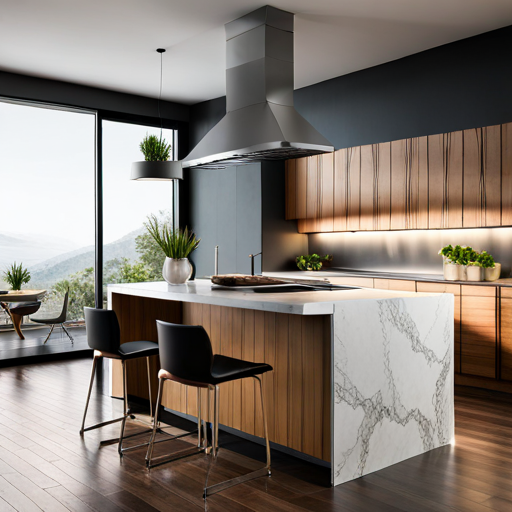
Stainless Steel Hoods
Looking for a sleek, modern look for your kitchen? A stainless steel range hood might be the perfect fit. These hoods are easy to clean and maintain, making them a popular choice for contemporary kitchens.
Stainless steel hoods are water, rust, and corrosion resistant, and their glossy finish can enhance the value of your home. While they may cost more than other materials, their durability and aesthetic appeal make them a worthwhile investment. Plus, with regular cleaning using a mild detergent and warm water, your stainless steel hood will continue to shine for years to come.
Designing Your Custom Range Hood
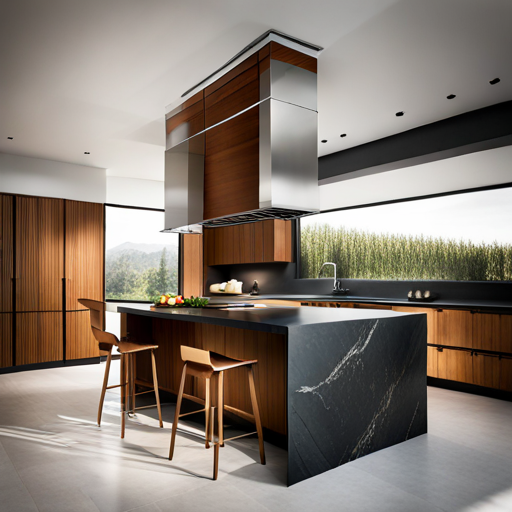
Designing a custom range hood is like painting a masterpiece. You start with a blank canvas and gradually add your personal touches. Choosing the style and hood height is the first step. It is an important part of the process. Wall-mounted, island, or under-cabinet – each style offers a unique aesthetic and different benefits. Incorporating design ideas into your custom range hood will truly make it one-of-a-kind.
Next, select a finish, texture, and size that complements your kitchen’s décor. With a wide range of luxurious finishes like stainless steel and copper, you can create a hood that is not just an appliance, but a work of art. And let’s not forget the fanliners, which include built-in lighting and LED bulbs, adding a touch of sophistication to your hood.
Custom Range Hood Costs and Considerations
Investing in a custom range hood is not just a design decision; it’s also a financial commitment. The cost can vary significantly depending on the size of your stovetop and the metal type chosen. At CopperSmith, the range hoods come with a base cost which varies according to its style. Typically, these prices range from $3,200 to $4,500.
Budgeting for your custom range hood project also involves considering other factors like installation and maintenance costs. For instance, for California residents, Prop 65 warnings must be taken into account when ordering a custom hood. But remember, a smaller stove size and economical customizations can potentially lower the cost of your custom range hood.
Custom Range Hood Installation
Installing a custom range hood is not a DIY project. For a secure and correct installation, it’s best to hire a professional. This ensures that your range hood is not just aesthetically pleasing, but also functional and safe.
To begin building your hood installation, start with constructing the hood frame, affixing it to the wall, and securing it with screws. Depending on the design of the hood and your kitchen configuration, the exact steps might vary.
Once your order is placed, you can expect to receive your custom range hood in approximately 3 1/2 weeks, depending on the extent of customizations.
Maintenance and Care of Custom Range Hoods
Just like any other appliance, a custom range hood needs regular care and maintenance to ensure its longevity and optimal performance. This involves cleaning the air filter and vent regularly to prevent buildup of grease and dirt.
But it’s not just about maintaining the functionality of your hood. It’s also crucial to preserve its look. The exposed metal, especially those with luxurious finishes, should be cleaned regularly to maintain their appearance. Always use appropriate cleaning agents to avoid damaging the hood.
Custom Range Hood Accessories and Upgrades
Customizing a range hood doesn’t stop at choosing the material and style. You also have a plethora of custom options, including accessories and upgrades, at your disposal. From finishes, textures, and other elements, you can further personalize your hood to match your kitchen’s décor.
And it’s not just about aesthetics. Attachments and upgrades like custom power pack range hood inserts with exhaust fans and lights can enhance the performance of your range hood. While these may add to the cost, they can also add value to your kitchen and make your cooking experience more enjoyable.
How to Choose the Right CFM for Your Custom Range Hood
A custom range hood is not just about style and aesthetics; it’s also about performance. One key performance metric is the CFM (cubic feet per minute), which measures the amount of air a range hood can move. The right CFM ensures your hood effectively removes smoke, steam, and odors from your kitchen.
So, how do you choose the right CFM for your custom range hood? It’s generally advised to use a CFM of 100 for every 12 inches of stove width and 100 CFM for every 10,000 BTUs of heat capacity. But also consider your cooking habits and kitchen size. For instance, if you frequently stir-fry or sauté food, you might need a higher CFM.
Ducted vs. Ductless Custom Range Hoods
The next decision you need to make is whether to go for a ducted or ductless range hood. A ducted hood vents the air outside, while a ductless one recirculates the air after filtering it. Both options have their pros and cons, and the choice largely depends on your personal preference and kitchen setup.
While ducted hoods may have higher upfront costs due to the need for installing ducting, ductless hoods require more frequent filter replacements. Also consider the position of the hood and its distance from the exterior. For example, an island range hood might be more difficult to duct than a wall-mounted one.
Summary
We have journeyed through the world of custom range hoods, exploring their benefits, styles, and considerations. We learned how a well-chosen range hood can not only enhance the ventilation and aesthetics of your kitchen, but also potentially increase your home’s value. Whether you prefer the natural look of wood, the timeless elegance of copper, or the sleek modernity of stainless steel, there’s a custom range hood waiting to transform your kitchen.
But remember, a range hood is more than just a pretty face. From installation and maintenance to choosing the right CFM and venting method, there’s a lot to consider. And with the right accessories and upgrades, you can create a range hood that’s not just an appliance, but a reflection of your style and culinary passion.
Frequently Asked Questions
What is the price to install a vent hood?
On average, range hood installation costs $750. Installation fees may vary depending on the type of rangehood and local labor rates.
Range hoods are an essential kitchen component, helping to drive out contaminated air, odors, grease, and heat while cooking.
How to build a kitchen vent hood?
Build a frame for the top and bottom of the range hood, connect the two frames, dry fit the range hood vent, cover the underside with plywood, install the plywood range hood face and trim, add final trim pieces, measure and cut wood, assemble the range hood, dry-fit the front panel, make template and cut arch, install exhaust fan and range hood, make shelf and trim it, attach front panel and molding.
Next, measure and cut wood for the frame. Assemble the range hood and dry-fit the front panel. Make a template and cut the arch for the range hood. Install the exhaust fan and range hood. Make a shelf and trim it. Finally, attach the front panel and molding.
What are the three types of ventilation hood?
Wall Mount Range Hoods, Ceiling Mount Range Hoods and Downdraft Vent Hoods are the three types of ventilation hoods.
Each type of hood has its own advantages and disadvantages. Wall mount range hoods are the most common type of hood and are typically the most affordable. They are easy to install and can be mounted to the wall or ceiling.
What is the difference between a vent hood and an insert?
A range hood insert is a customizable fan, light, and control panel unit that does not come with full ventilation capabilities, whereas an under-cabinet hood is a full-service ventilation system that can be installed underneath kitchen cabinets.
What are the benefits of a custom range hood?
Custom range hoods offer improved kitchen ventilation, increased aesthetic appeal, and the potential to raise home value.
Range hoods are an important part of any kitchen, as they help to keep the air clean and free of smoke and odors. They also provide a stylish addition to the kitchen.



